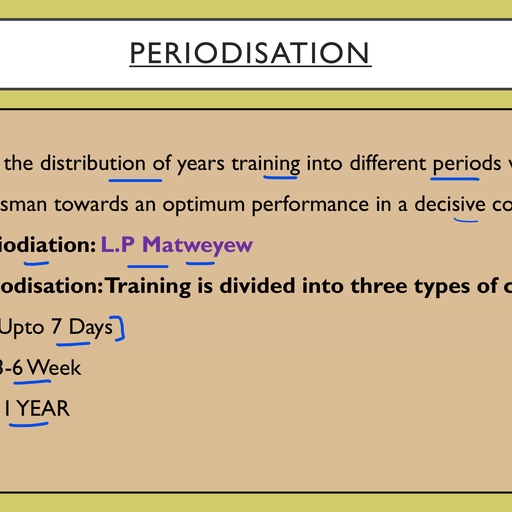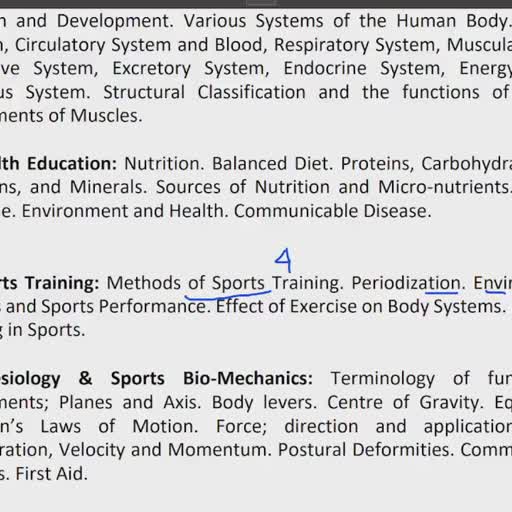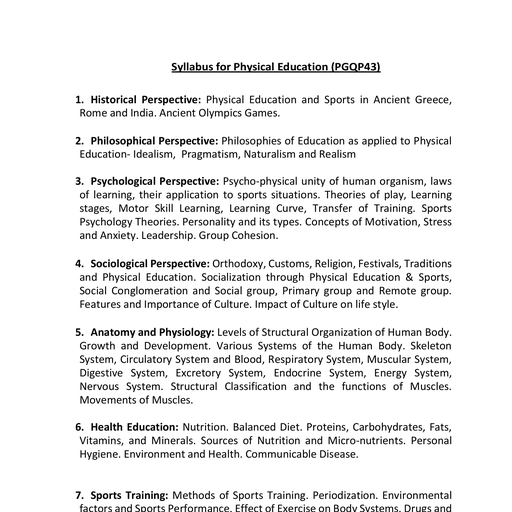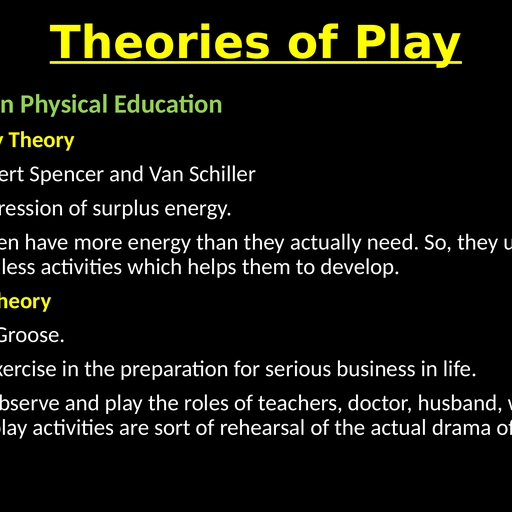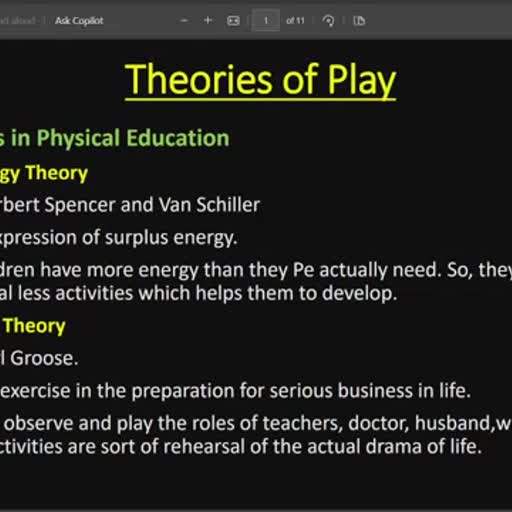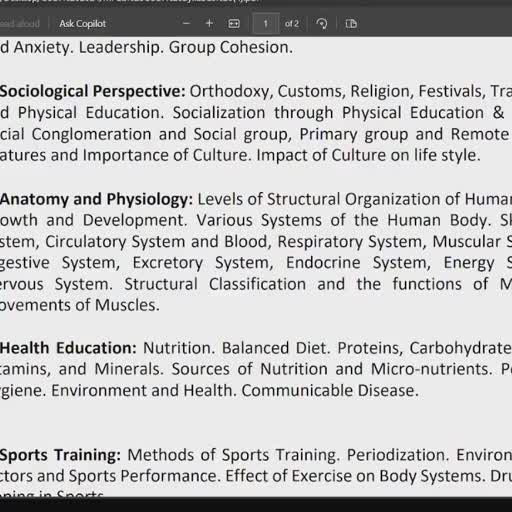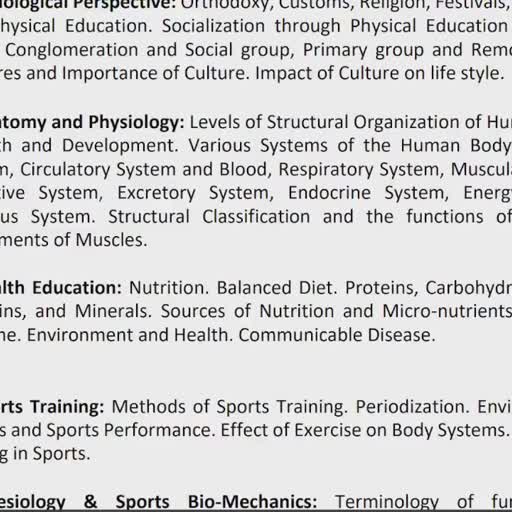Page 1 :
(a) Meaning and importance of Sports Training. Definition of Sports Training and, its importance., (b) Methods of training. Methods of Training: Repetition, continuous & fartlek,, and interval - Definition, purpose, advantages and procedure of each., , Advantages of warming up, conditioning and cooling/limbering., (c) Isometric and Isotonic exercises. Meaning, advantages and examples of each., (d) Circuit Training. Meaning and advantages of circuit training; procedure of, conducting circuit training., (e) Weight Training. Meaning and advantages of weight training.
Page 2 :
Meaning and importance of Sports Training. Definition of Sports, Training and its importance., • Sports Training : Training is a process of preparing an individual for any event or an, activity or job. In sports we use the term ‘sports training’ which denotes the sense, , of preparing sports persons for the highest level of performance. Sports training is, the physical, technical, intellectual, psychological and moral preparation of an, athlete or a player by means of physical education. Sports training is an overall, scientific and systematic channel of preparation of sports persons for high level of, sports performance. Therefore, we can say that sports training is a type of training, that is designed to improve our fitness (in the broad sense of the term) level for, the purpose of improving your ability to perform a given
Page 3 :
DEFINITIONS OF SPORTS TRAINING AND COACHING, • 1. Sports training is the basic forms of preparation of sportsmen., —Matveyev, • 2. Sports training, based on scientific knowledge, is a pedagogical process, of sports perfection through which systematic effect on psycho-physical, performance ability and performance readiness aims at leading the, sportsman to high and the highest performance., —Harre, • 3. Sports training is a scientifically based and pedagogically organised, process through planned and systematic, effect on the performance ability, and performance readiness aims at sports perfection and performance, improvement as well as at the contest in sports competition., — Schnabel
Page 4 :
•, , The importance of sports training is as follows :, , 1. Physical Fitness : Physical fitness is the basic requirement of any game and sports. There is a specific, , requirement of each component of physical fitness according to the specific sport. Sports training, helps in building a fine physique and ensures good health., 2. Discipline : Sports training helps in incorporating a sense of discipline in a persons life., , 3. Unity : Sports training teaches a sports person about teamwork, sense of belonging and unselfish, play. It also encourages to play for team rather than for one’s personal accomplishment., 4. Confidence : It boost the morale of a person when he performs and also when he excels towards a, particular game. It improves self esteem as well as body posture, which makes one feel more, confident and determined., 5. Focus : Counselors and mental trainers help in identifying those areas which are causing the, sportsman to become distracted on the field and enhance focus on the
Page 5 :
Methods of Training: Repetition, continuous &, fartlek, and interval - Definition, purpose,, advantages and procedure of each.
Page 6 :
REPITITION, •, •, , Repetition training is when you break training distances into smaller, more manageable, parts and repeat these parts. This is, for example, when you sprint over a set distance, several times. It improves your speed-endurance., An essential part of repetition training is the recovery time in between reps. In repetition, training, when you include more recovery intervals, your speed is improved. When you, reduce the number of recovery intervals, your endurance is improved., , •, •, •, •, •, •, , It builds new muscle, It increases endurance, It adds variety, It burns calories, It Aaddress weakness, , •, •, •, •, , Advantages, , Limited Strength Results, Technique Mistakes, Rep Range/Load Mistakes, , Disadvantages
Page 7 :
CONTINUOUS, •, •, , •, , •, , •, , Continuous training is any form of training that maintains the heart rate at a desired, level over a sustained period of time., An example of continuous training would be cycling for 30 minutes at an intensity, that raises the heart rate. Other examples of exercises include running, swimming or, a mix (e.g. Triathlons)., When completing continuous training, an athlete should aim to keep their heart rate, between 60% and 80% of their maximum heart rate., • Advantages, Continuous training is useful as it improves cardiovascular fitness and you can train in, most places. It is also good as you can train on your own or with a group., • Disadvantages, The main disadvantages of continuous training is that it can become boring and, tedious. We all know how boring it can be doing the same activity over and over, again
Page 8 :
FARTLEK, • Fartlek training is a method of training that uses periods of exercise and rest., An example of Fartlek training is running at a full sprint for 10 seconds, walking, for 1 minute followed by a medium intensity jog for 4 minutes. An athlete, would then rest for a set period of time and then repeat the programme, again., • Fartlek training should always consist of both high and low intensity training., • Advantages, • An advantage of Fartlek training is that it develops both aerobic and anaerobic, systems as this type of training uses different types of intensity., • A further advantage of Fartlek training is that you can use this method virtually, anywhere so very little equipment is needed., • Disadvantage, • A disadvantage of Fartlek training is that it can become very repetitive and, those new to training can find the intensity difficult to sustain for a long period, of time.
Page 9 :
• INTERVAL, •, , •, , •, , •, , •, , Interval training is exercising with periods of rest planned into the session. An example, of interval training is completing 10x30m sprints with 20 seconds rest in between each, effort., Interval training works on both aerobic and anaerobic systems as well as developing the, body’s recovery system., • Advantage, An advantage of interval training is that training sessions can be quick compared to, other methods of training such as continuous training., Another advantage is that this method of training uses rest to help aid recovery and can, be relevant to sports (such as football or tennis)., • Disadvantages, A disadvantage of interval training is that athletes new to exercise can find this method, of training hard to repeat over a sustained period of time.
Page 10 :
ISOMETRIC EXERCISES, •, , Isometric exercise is a type of low-impact exercise that involves straining your muscles without moving or, bending your joints. A prime example is holding your body in a plank position, Advantages, , •, , Increase strength, power, endurance, , •, , Decrease injury potential, , •, , Can be done anywhere, Examples, , •, , Squats Hold, , •, , Hand Stand, , •, , Plank
Page 11 :
ISOTONIC EXERCISE, •, , Involves putting a constant amount of weight or tension on your muscles while moving your joints through a, full range of motion. An example is bench-pressing, as the amount of weight stays the same and your joints, bend and straighten all the way, , Advantages, •, , Allows full ROM, , •, , Resistance can be increased, , •, , increase strength, power, endurance, Examples, , •, , Push Ups, , •, , Pull Ups, , •, , Resistance Bands
Page 12 :
CIRCUIT TRAINING, •, , •, , Circuit training is a combination of six or more exercises performed with short rest periods between, them for either a set number of repetitions or a prescribed amount of time. One circuit is when all of, the chosen exercises have been completed. Multiple circuits can be performed in one training, session., Circuit training will usually involve 6-12 exercises and should be structured in a way that enables you, to keep performing the exercises with good technique and very short rest intervals., •, , •, •, •, •, •, •, •, •, , Improves muscular endurance. ..., Increases strength and muscle growth. ..., Improves heart health. ..., Offers a full-body workout. ..., Is time efficient. ..., Improves exercise adherence. ..., May promote weight loss. ..., May improve your mood, , ADVANTAGES
Page 13 :
WEIGHT TRAINING, •, , •, , Weight training is a type of strength training that uses weights for resistance. Weight training provides a stress, to the muscles that causes them to adapt and get stronger, similar to the way aerobic conditioning strengthens, your heart., Weight training can be performed with free weights, such as barbells and dumbbells, or by using weight, machines. You can also increase your strength through other types of resistance exercises, such as by using, your body weight or resistance bands., , ADVANTAGES, , •, •, •, •, •, , Men and women of all ages can benefit from strength training, but get a doctor’s OK before beginning,, especially if you haven’t exercised in a while., Two or three 20- or 30-minute strength training sessions every week can result in significant health benefits:, Increased muscle mass: Muscle mass naturally decreases with age, but strength training can help reverse the, trend., Stronger bones: Strength training increases bone density and reduces the risk of fractures., Joint flexibility: Strength training helps joints stay flexible and can reduce the symptoms of arthritis., Weight control: As you gain muscle, your body begins to burn calories more easily, making it easier to control, your weight., Balance: Strengthening exercises can increase flexibility and balance as people age, reducing falls and injuries.

